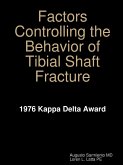This dissertation involves a preliminary study into the structural dynamic behavior of the NASA Manned Spacecraft Center (MSC), located in the Flight Acceleration Facility, bldg 29, in Houston, Texas. The 50-ft. arm can swing the three-man gondola to create g-forces astronauts will experience during controlled flight and during reentry. The centrifuge was designed primarily for training Apollo astronauts. During operation of the centrifuge, the astronauts can control the motion of the gondola in two gimbal axes, while the gondola is rotating about its principal axis, to simulate flight activity. The result of these coupled motions lead to transient loading functions, which arise due to rigid body kinematics. The study is describe in three Chapters. Chapter 1 deals with the response of a simplified model of the arm, gimbal and gondola structure for the purpose of obtaining dynamic response factors to be associated with the arm. Chapter 2 deals briefly with a simplified model of the same system for the purpose of obtaining dynamic response factors to be associated with the gimbal ring and to justify the simplifications implicit in the model used in Chapter 1. In Chapter 3, the rigid body kinematic equations are studied in order to develop relations between the forcing functions utilized in Chapters 1 and 2 and the motion parameters of the kinematic analysis. Using these relations, the dynamic response factors tabulated in Chapters 1 and 2 in terms of the generalized forcing functions may be interpreted in terms of the motion parameters.








